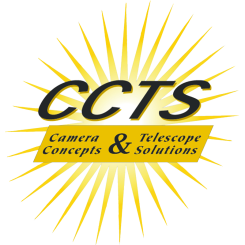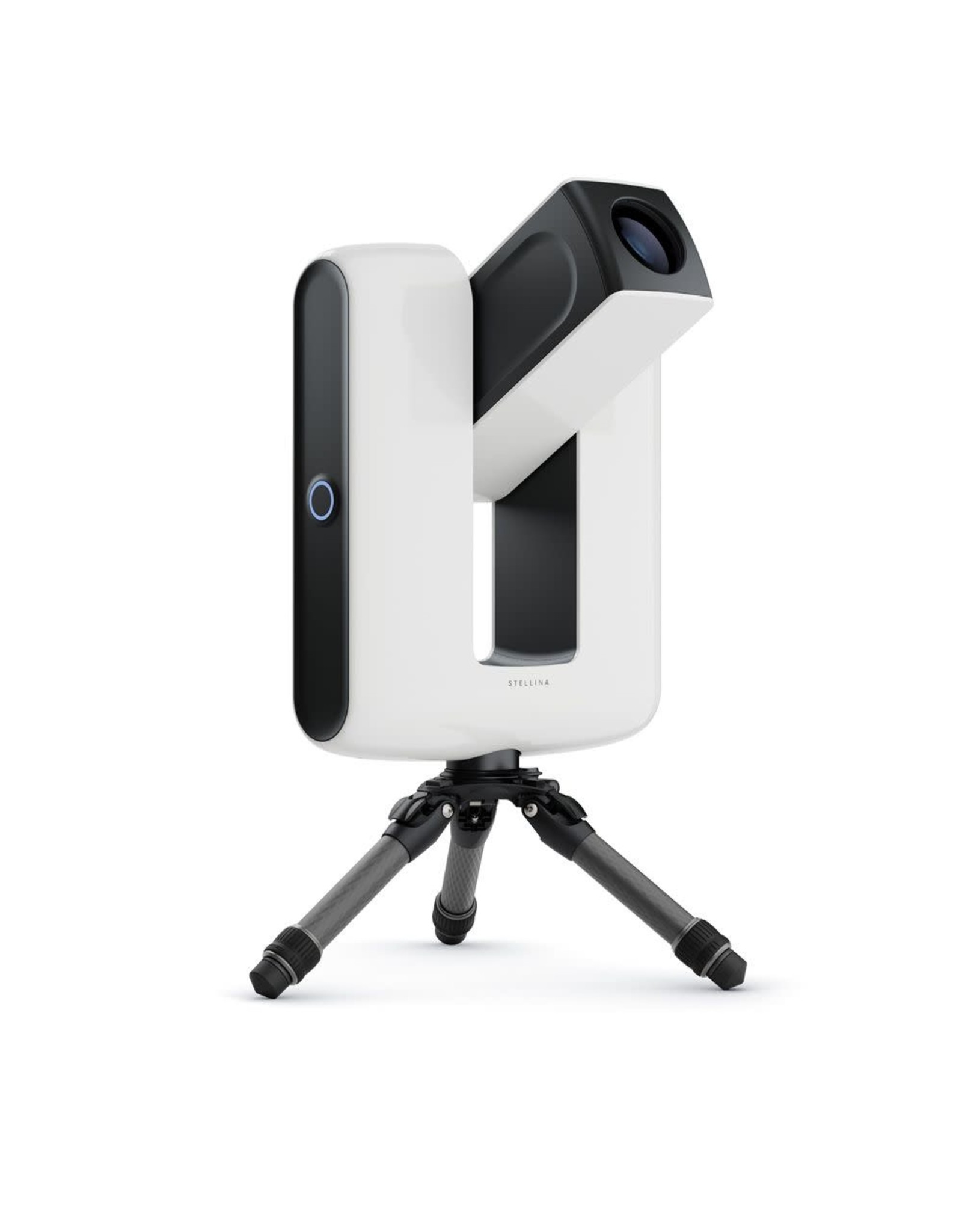Vaonis Stellina Observation Station - ST80
| Article number: | ST80 |
| Availability: | More on the Way to us |
| Delivery time: | More on the Way to Us |
The world's first telescope/camera hybrid, the Stellina by Vaonis is wowing first-time telescope users as well as advanced amateur astronomers and professionals with it's amazing technology and ease of use. Before we delve into the details, let's talk about what Stellina is and how this smart astronomy robot is different from a traditional telescope.
Stellina...
When your Stellina arrives and you open the box, the first thing that will hit you is that it looks nothing like a telescope! It is true that Stellina looks more like a fancy computer tower than a cutting-edge mobile celestial observation station, but once you experience the forward-thinking genius that is Stellina, we think you'll agree that it definitely won't stay hidden in your desk!
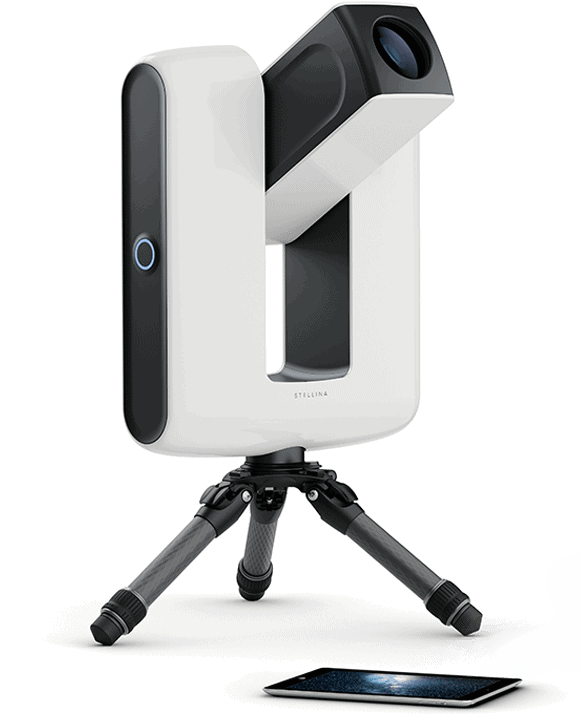
While Stellina is packed with computerized components like a computer tower, the most visible difference is the 80 mm refractor telescope that is stored in the center portion of the observation station. Once the Vaonis station has been attached to the included Gitzo tripod, turned on by pushing the giant button on the side panel and connected to your smartphone or tablet via Stellina's on-board wireless network, you will get a better sense of Stellina as a telescope. The system will begin to initiate a start-up sequence upon your command, and when the refractor begins to move upward in search of the proper alignment stars, you will better see the separation between the telescope itself and the fork arms of the alt-azimuth mount.
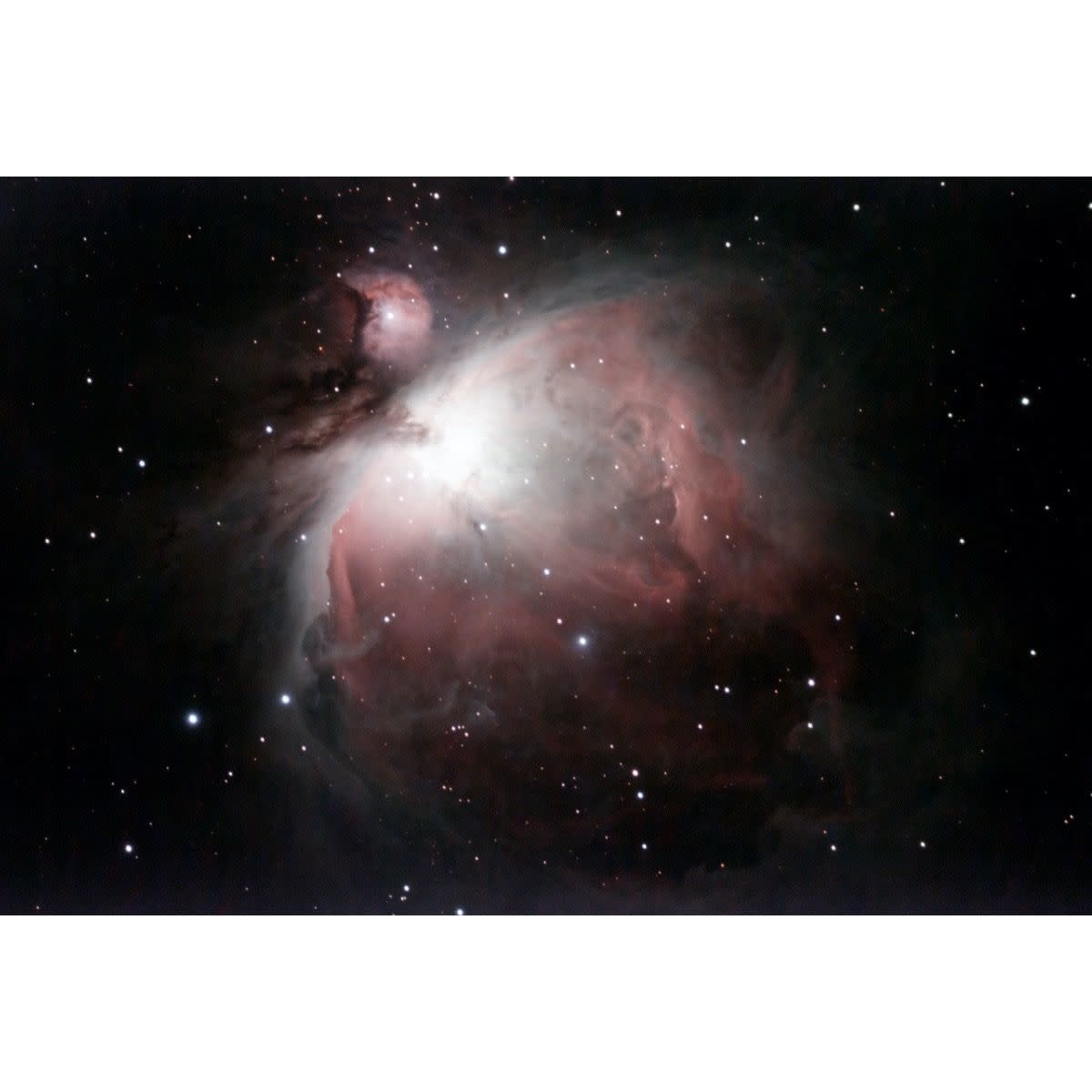
One of the many things that makes Stellina vastly different from traditional telescopes is how celestial objects are experienced by the user. With a traditional telescope, we look through an eyepiece to see a magnified live view of an object, and if we want a different view (more or less magnification or field of view), we would simply change eyepieces. With Stellina, there are no eyepieces involved. Instead, your smartphone or tablet, loaded with Stellina's free app, is your viewing screen. Here's how it works...
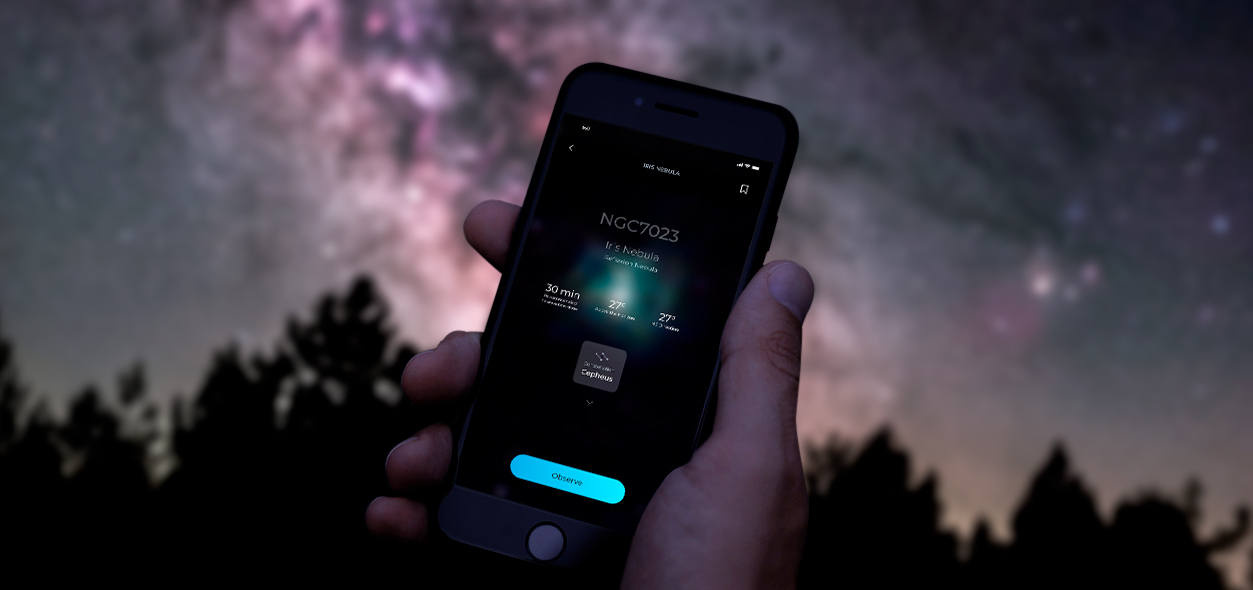
In the Stellina app, simply choose an object you'd like to experience from the graphical list of best objects for your location and observing time, or enter your own celestial coordinates in manual mode to look at any object except the Sun. Let's say you choose the beautiful Orion Nebula from the best list. Once you hit the button, Stellina shows that area of the sky on your screen and, within seconds, you'll begin to see the wispy structure of M42, the Orion Nebula, form on your device. The experience is similar to watching a Polaroid photo develop, or, if you have worked in a dark room, watching the image appear when photographic paper is put into the developing solution. Keep watching and you will see more and more detail appear as Stellina takes multiple short exposures, stacks them perfectly and processes them to make the object look its best, which is not like a Polaroid at all! Once Stellina is finished (the length of time depends on several factors) you can save the image in JPG format to your device or share it in Ultra-HD on social media. For those who want to have a hand in processing, you can either plug a USB key into the Stella compartment at the beginning of the observing session to retrieve the raw images and process them yourself, or you can tweak the processing after Stellina has done her part by saving the images in TIFF format. Whether you let Stellina do it all or not, the end result will be a beautiful image that normally takes a whole lot more work (and equipment) to create in the traditional manner.
Another great feature with Stellina is the ability to allow up to ten (10) mobile devices to connect to her WiFi network at the same time. Picture Stellina out on the porch imaging a spiral galaxy while your whole family, each with their own devices, experiences the amazing process of bringing a little bit of the Universe into your home. Or have friends over and have a star party, because here's the thing...since Stellina uses a high quality imaging sensor and is equipped with a light pollution filter, she can show you deep-sky objects that would not be readily visible visually from a city or suburb. Of course, if you take Stellina out to a dark sky area, or you are lucky enough to live away from most forms of artificial light pollution, your results will be even better, but it is not necessary!
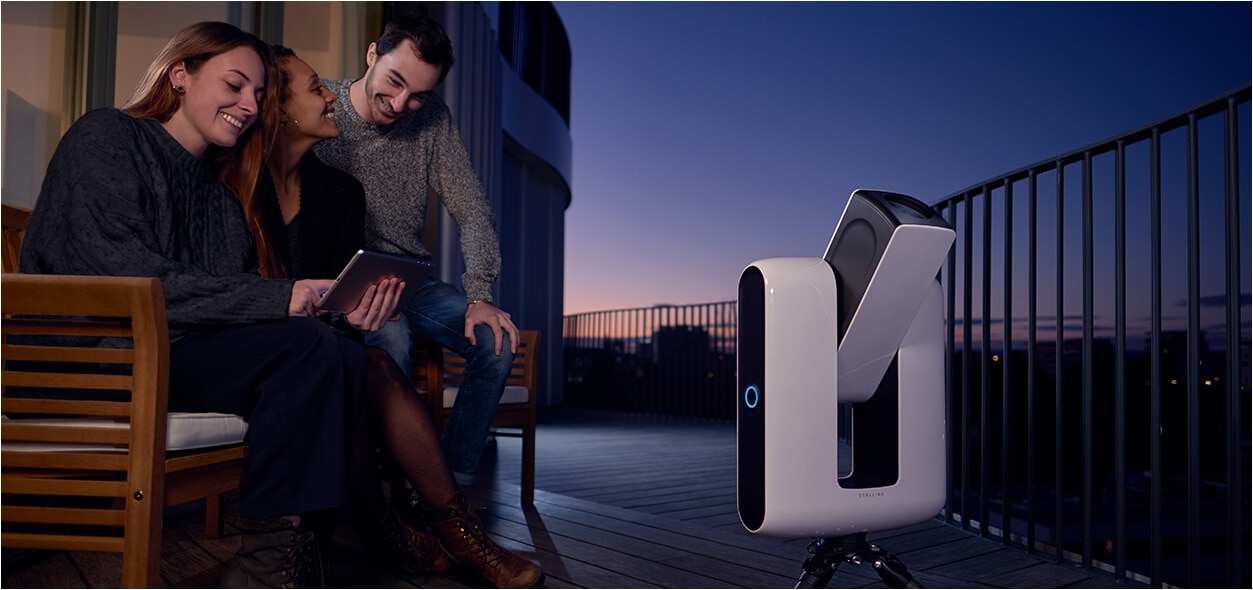
The Stellina as a Telescope
The 80 mm f/5 ED doublet refractor was designed from the ground up with lanthanum glass for contrast and clarity and specialized coatings that block the IR and UV wavelengths to keep the negative impacts of light pollution to a minimum. A built-in CLS (City Light Suppression) filter positioned in front of the imaging sensor further diminishes the contrast-killing effects of artificial light on observing celestial deep-sky objects. This large-field astrograph has a 1-degree by 0.7-degree field of view and so works best for larger objects. That means that planets are not the best targets for a wide-field scope like Stellina...they are just too small. You can look at them, and see the rings of Saturn and Jupiter and his brighter moons, but that's about it. The moon looks awesome, as do galaxies, nebulae, star clusters, etc.
The Stellina as a Camera
When you combine a fast telescope and an imaging sensor with small pixels, the resulting images will include lots of detail. The imaging sensor used in Stellina is the 6.4M Sony IMX178 CMOS. It is both an Exmor R and a STARVIS sensor, which means the IMX178 is super sensitive, has low read noise, and is back-illuminated for high picture quality. The pixels are just 2.4um square and are situated in an array of 3096 x 2080 effective pixels. This is perfect for short exposures, and that is what Stellina is built for...stacking a high number of short exposures to achieve an image full of glorious detail.
Other Features
- Electronic Autofocus: Stellina autofocus is precise to 12 micrometers and even takes thermal variation into account to accomplish best focus for the object, the challenges of light pollution & weather, and the location.
- Dew Heater: An integrated dew heater keeps dew from forming on the optics and forcing you to call it a night. It has a humidity and temperature sensor to stay on top of changing conditions.
- GoTo Pointing & Tracking: Like many telescopes, Stellina uses Go-To technology to automatically find and track an object.
- Light Pollution Filter: As mentioned above, Stellina has a light pollution filter placed just above the image sensor to help images have better contrast, even in the city.
- Camera Rotator: The automated camera rotator allows Stellina to choose the best composition for an object.
- Live Imaging Stacking: Stellina takes many short exposures of an object and then stacks those images precisely on top of each other to create a final image full of beauty and detail.
- WiFi Network: You do not need an internet connection to use Stellina except for updates and creating your initial account. Instead, connect to Stellina's WiFi network via your smartphone or tablet (iOS 10 or higher, Android 6 or higher) and start cruising the celestial highway! The WiFi has a range of about 32 feet with no obstructions, and remember, up to 10 devices can connect at one time!
- On-Board Computer: 64-bit quad-core processor clocked at 1.4 GHz, a high performance graphics processor and 1 GB of SDRAM.
- Stellinapp: The free Stellina app (Apple or Android) is the system's remote controller. It offers a list of about 200 objects, including the entire Messier catalog as well as select objects from the NGC and IC catalog, the Moon, and other objects that are currently popular. Updates are done often to keep the list as up to date as possible. You can also enter manual mode and enter any celestial coordinates you like should you prefer that method or know the coordinates of a bright comet or asteroid, etc.
Stellina General Specifications
- Weight: 24.7 lb.
- Dimensions: 19" x 15" x 4.7"
- Operating Temperature: 32F to 104F
- Power Supply Requirements: USB Type-C, 5.1V +/- 0.1V minimum & 2.4A minimum
- Battery Life: Approximately 10 hours with 20,000mAh external battery
- Included Battery Life: 5 hours
- Image Processing: Integrated and adapted to target
- Polar Alignment: Automated
- Control: Smartphone or Tablet via mobile app
- Device Connection: WiFi 2.4GHz. Frequency band: 2400 - 2483.5 MHz. Modulation: 802.11 b/g/n. Maximum power emitted: 6 dBm (EIRP). Software: brcmfmac version 7.45.41.46
- Mobile Application: Stellinapp compatible with iOS and Android
- External Devices: 1 USB type-C (power), 2 USB type-A for USB storage by external accessories (user supplied)
- Stargazing: Deep sky objects (galaxies, nebulae, star clusters) the Moon, the Sun (with proper solar filter, not included), comets, asteroids
- Warranty: 2 Years
Stellina Optical Specifications
- Objective: ED doublet refractor
- Aperture: 80 mm (3.15 inches)
- Focal Length: 400 mm
- Focal Ratio: f/5
- Focus: Integrated autofocus
- Image Sensor: Sony CMOS 1/1.8"
- Resolution: 3096 x 2080 pixels (6.4 megapixels)
- File Formats: JPEG, FITS (16-bit raw images), TIFF
- Field of View: 1 degree x 0.7 degrees
- Magnification: Equivalent to 50X and up to 100X depending on connected device's screen
- Filter: Light Pollution filter (integrated)
Stellina Mount Specifications
- Type: Alt-Azimuth
- Object Aiming: Automated with star field detection technology
- Field De-Rotator: Built in and controlled by onboard computer
- Dew Control: Integrated dew control system
Included in the Box
- Stellina Observation Station
- Gitzo Tripod
- Bubble Level
- 10,000 mAh Battery/Powerbank
- Two Cables
- Dust Cover
